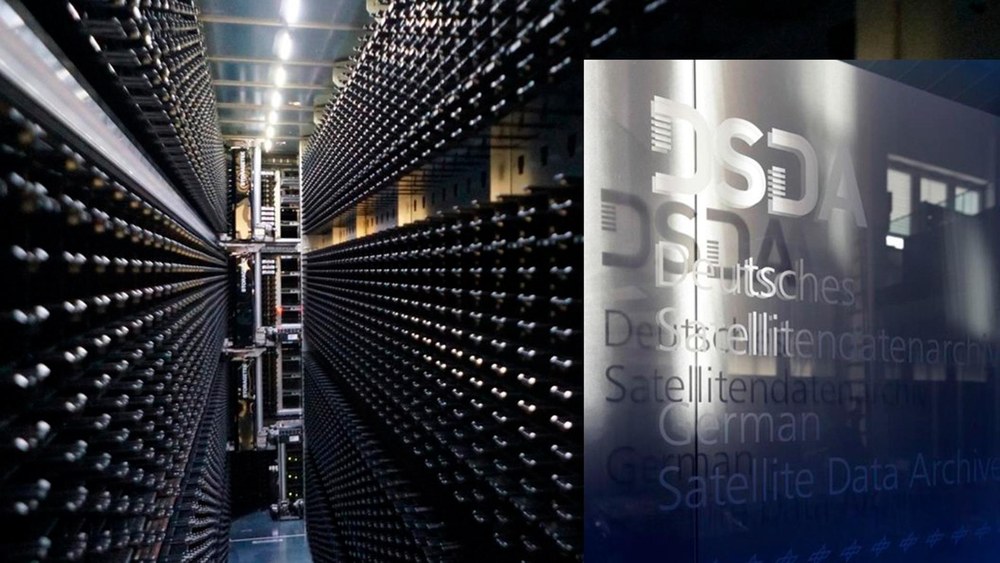New data platform to host Copernicus Earth observation data


- The Copernicus Data Space Ecosystem will make all Copernicus satellite data available via a single platform.
- DLR's Earth Observation Center (EOC) plays a central role in the development of the project's IT infrastructure thanks to its expertise with the German Satellite Data Archive in Oberpfaffenhofen and Neustrelitz.
- Focus: Earth observation, space, digitalisation
Remote sensing data reveals the state of our planet and allows us to look into Earth's past: it is an indispensable tool to help us better understand and protect our planet. How can we secure this tool long term while providing continuous access? The European Copernicus Earth observation programme seeks to answer this question. On 24 January 2023, the 'Copernicus Data Space Ecosystem' was presented at the European Space Conference in Brussels. In the coming months, this new data ecosystem will replace all previous channels and make all Copernicus data and data products available via a single platform. The available data services will also be expanded. The German Aerospace Center (Deutsches Zentrum für Luft- und Raumfahrt; DLR) is part of the European consortium that was recently awarded the contract for this large-scale project.
"DLR has conducted extensive work on Big Data platforms from an early stage and this contract demonstrates how pioneering our work has been. Our developments in the long-term archiving of Big Data will continue to drive Earth observation forward in the future," says Stefan Dech, Director of the German Remote Sensing Data Center (Deutsches Fernerkundungsdatenzentrum; DFD) at DLR's Earth Observation Center (EOC).
Big Data – processing and long-term archiving
34 petabytes of data produced by the Copernicus missions are currently available online. This volume is expected to reach 80 petabytes towards the end of the project. To handle such a volume, the seven partners in the consortium, led by T-Systems, are combining their expertise in remote sensing, cloud solutions, data archiving and web portals. In addition to technological expertise, EOC is contributing the German Satellite Data Archive (D-SDA) – a core component of the IT infrastructure.
DLR has been leading the development of this archive since the 1990s. EOC is also implementing a high-performance data analytics platform called 'terrabyte' at the Leibniz Supercomputing Centre (Leibniz Rechenzentrum; LRZ) in Garching. terrabyte makes global Earth observation data from European and national missions available on a high-performance cloud environment for analysis by DLR researchers. In doing so, the teams at EOC have developed cutting-edge expertise in the processing and long-term archiving of large data volumes. Data from the Sentinel satellites have been stored in D-SDA for internal use, including use with terrabyte, since the programme began. The desired data can therefore be downloaded directly from the DLR archive into the Copernicus Data Space Ecosystem.
Historical data can also be obtained from the archives of the European Space Agency (ESA). This is where the raw data from the Sentinel missions are stored. EOC, as part of the consortium, ensures that the raw data produced by the Sentinel-1 satellites can be used to create viable products.
Data products on demand
The Copernicus Data Space Ecosystem will provide the desired data quickly and efficiently, regardless of whether the data are current or were acquired in the past. In disaster situations, the information provided can be lifesaving. Thanks to the Copernicus sentinel satellites, changes in the environment and climate can also be monitored precisely on a global scale, improving our ability to protect them. The data they produce serve as a basis to better assess the effects of climate change. The products of the Copernicus services will also be available via the shared ecosystem – including those related to the atmosphere, marine environments, land monitoring, climate change, security and disaster and crisis management.
In addition, users will be able to process the satellite data directly within the ecosystem without downloading it. Thanks to cloud technologies, users will then be able to create their own maps and data products regardless of their location.
The Copernicus Data Space Ecosystem will make these data and products directly and easily available to all interested parties. This applies in particular to public institutions, but researchers, companies and private individuals can also continue to use the services offered by the European Earth Observation Programme – the new web portal is freely accessible at: www.dataspace.copernicus.eu.
About the project
The 'Copernicus Data Space Ecosystem' is coordinated by the European Space Agency (ESA) on behalf of the European Commission and implemented by a European consortium. The consortium consists of a total of seven partners, led by T-Systems, with CloudFerro, Sinergise, VITO, ACRI-ST, RHEA and the German Aerospace Center (Deutsches Zentrum für Luft- und Raumfahrt; DLR). The contract has a term of six years, with the possibility to extend up to ten years. The total value of the contract is around 150 million euros.
